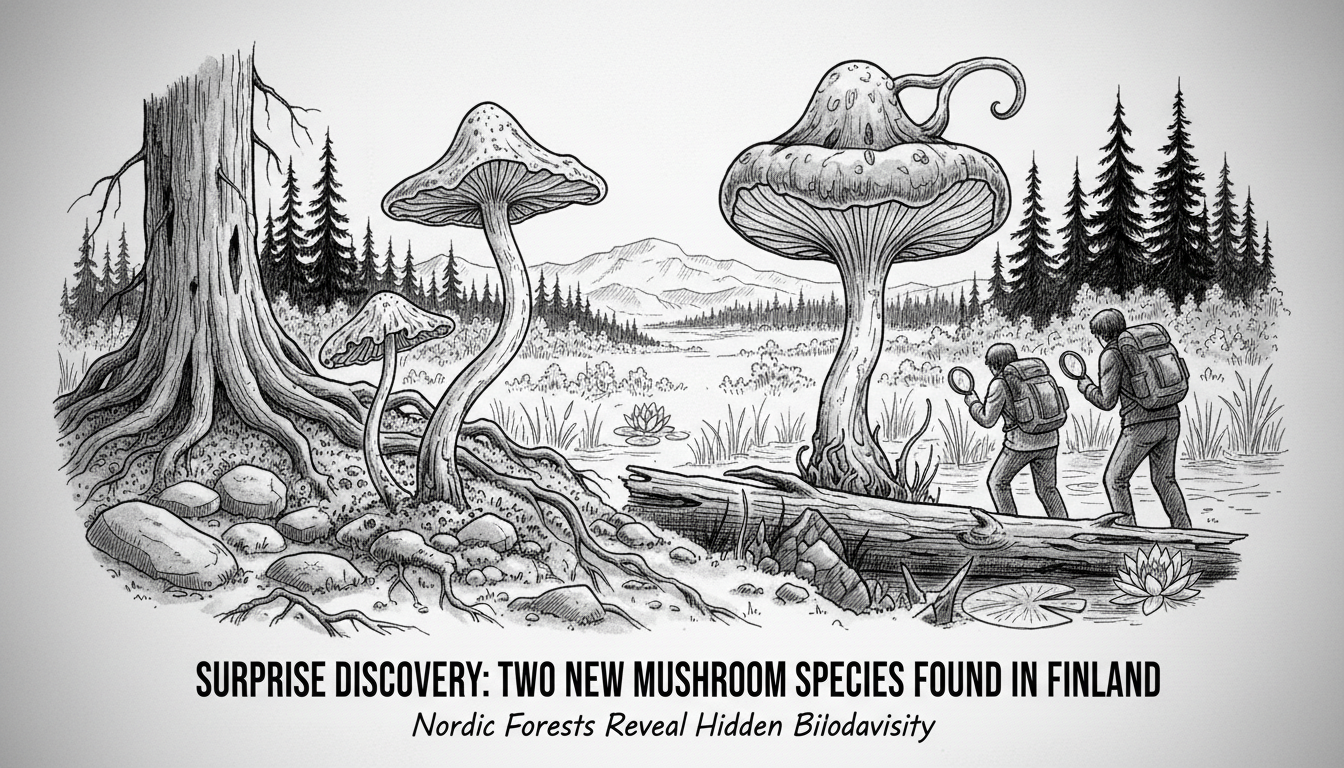Researchers have discovered two previously unknown mushroom species in Finland's northern and central regions. This finding highlights how much biodiversity remains undocumented in Nordic forests. Scientists estimate that less than half of Finland's fungal species have been properly identified and classified.
The discovery came from researchers at the University of Turku's biodiversity unit and the University of Gothenburg's biology and environmental science museum. One species grows in the fells of Enontekiö in Finnish Lapland, while the other appears in the Pirkanmaa and Kainuu regions further south.
Both new species belong to the Inocybe genus, which mainly consists of poisonous mushrooms. These medium-sized gilled fungi form mycorrhizal relationships with trees and some orchid species. This symbiotic connection through fungal roots is crucial for forest growth and tree health.
One species, named Inocybe badjelanndana, thrives in the calcareous heaths and stream edges of the Köli Mountains. It often grows alongside willow species. This mushroom takes its name from Sweden's Padjelanta National Park, where it has also been documented.
The other species, Inocybe minata, prefers natural damp herb-rich forests and riparian willow habitats. Its name references its rare or endangered status. In Finland, researchers have mainly located this species within protected nature reserves.
Both mushrooms inhabit environments that are scarce in Finland and face multiple threats. Climate change, forest drainage, and other human activities endanger these delicate ecosystems. The discoveries resulted from years of systematic collection and research work across Nordic regions.
DNA sequencing technology now enables scientists to better identify difficult-to-distinguish mushroom species and genera. The research team has described ten new Inocybe species in recent years, including these two latest finds.
Finland's fungal diversity plays a vital role in ecosystem functioning through decomposition and nutrient cycling. Mycorrhizal fungi that live in symbiosis with trees through fungal roots are particularly important for forest growth and tree wellbeing.
The findings were published in the international scientific journals Persoonia and Fungal Systematics and Evolution. The research demonstrates that despite Finland's extensive biological surveys, substantial undiscovered diversity still exists within the country's natural environments.
This discovery matters because it shows how little we still know about Nordic ecosystems. As climate change accelerates, understanding these relationships becomes increasingly urgent for conservation efforts. The identification of new species helps scientists better comprehend the intricate web of life in northern forests and improves our ability to protect vulnerable habitats.
